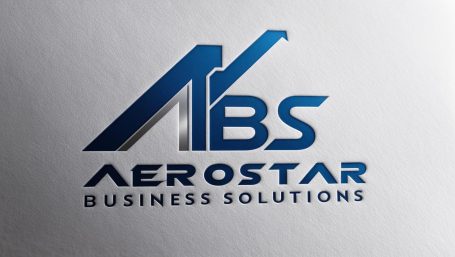Microsoft Dynamics 365 ERP
Microsoft Dynamics refers to a suite of enterprise resource planning (ERP) and customer relationship management (CRM) software applications designed to help businesses manage their operations more efficiently. Dynamics solutions provide tools for financial management, supply chain management, project management, and customer service, among others. In the context of Microsoft Dynamics implementations, organizations tailor these applications to meet their unique business needs, streamlining processes, enhancing data analytics, and improving overall productivity. By leveraging Dynamics, businesses can optimize their workflows, gain valuable insights into their operations, and foster better relationships with their customers.
Ideal Company for Dynamics?
1. Mid-Sized to Large Enterprises
Typically 50 to 5,000+ employees
Need to unify multiple departments or locations under one system
Often replacing fragmented legacy systems with a scalable cloud solution
2. Companies with Complex Operations
Multi-entity or multi-country operations
Require intercompany accounting, multi-currency, or multi-language support
Complex supply chains, inventory, or service delivery workflows
3. Product-Based Businesses
Manufacturing, wholesale distribution, retail, e-commerce, or supply chain-focused firms
Require robust inventory, warehouse management, production planning, and quality control
4. Service-Based Businesses
Consulting, IT, professional services, and field service providers
Benefit from integrated project accounting, resource scheduling, and CRM
5. Growing Companies Needing Flexibility
Firms outgrowing entry-level systems like QuickBooks or Xero
Looking for deep integration with Microsoft 365, Power BI, and Power Platform
Want the ability to customize workflows, dashboards, and integrations without heavy IT involvement
Key Strengths of Microsoft Dynamics 365 ERP
Modular approach: choose only what you need (Finance, Supply Chain, Sales, HR, etc.)
Deep integration with Microsoft tools (Excel, Teams, Outlook, Power BI)
Strong support for automation, AI insights, and low-code app development
Scalable for both SMBs and global enterprises
Less Ideal For
Very small businesses (under 10–15 employees) with simple accounting needs
Companies needing highly specialized industry ERP (e.g., DCAA-compliant accounting like Unanet or Deltek)
How much can you anticipate paying for Dynamics and the Implementation?
1. Software Licensing Costs (Annual Subscription)
Dynamics 365 is modular and priced per user per month. Below are the most commonly used modules for ERP functions:
Core Licensing (Per User/Month)
Module
Base License
Attach License (if you already have another module)
Dynamics 365 Finance
$180
$30–$50
Supply Chain Management
$180
$30–$50
Business Central (SMB version)
$70–$100
N/A
Project Operations
$120
$30–$50
Sales or Customer Service
$65–$95
$20–$40
Estimated Annual Cost
Company Size
Users
Estimated Annual License Cost
25 users
$45,000–$75,000
(Finance + SCM or Project Ops)
100 users
$150,000–$300,000
Depending on modules and roles
Business Central (for SMBs) offers lower-cost plans at $70–$100/user/month, suitable for firms with simpler needs.
2. Implementation Costs
Implementation cost depends on scope, complexity, integrations, and whether you’re using Business Central (SMB) or Finance and Supply Chain (enterprise-grade).
Typical Implementation Ranges
System
Implementation Cost
Dynamics 365 Business Central
$25,000–$75,000
Dynamics 365 Finance & SCM
$100,000–$500,000+
Includes:
Requirements gathering
System setup & configuration
Data migration
Custom workflows
Training & testing
Integration with other tools (CRM, payroll, etc.)
3. Ongoing Support & Services
Basic support is included in licensing
Premium support or partner-managed services typically range from:
$2,000–$10,000/month depending on SLAs, user base, and custom needs
Total Year 1 Estimate Example for Mid-Sized Firm (50 Users, Finance + SCM)
Cost Type
Estimated Amount
Annual Licensing
$90,000–$150,000
Implementation
$150,000–$300,000
Annual Support
$24,000–$60,000
Total Year 1
$264,000–$510,000+
Implementation Time Lne
Example Dynamics 365 ERP Implementation Timeline
Duration: 6–9 Months
Planning & Discovery (Weeks 1–4): Define goals, key processes, and project scope.
System Design & Configuration (Weeks 5–12): Set up financials, inventory, procurement, and user roles.
Data Migration & Integrations (Weeks 13–18): Clean and import legacy data; connect external systems.
Testing & Training (Weeks 19–24): Perform system testing and train users across departments.
Go-Live Preparation (Weeks 25–28): Migrate final data, freeze legacy systems, and prep users.
Go-Live & Support (Weeks 29–32): Launch the system and provide hypercare support.
Post-Launch Optimization (Weeks 33–36+): Fine-tune operations, build reports, and assess ROI.
Call Now to Schedule Your Complimentary Discovery Call.
Microsoft Dynamics 365 ERP Implementation
Transform Your Business with Confidence
Call now to schedule your complimentary discovery call and learn how a Microsoft Dynamics 365 ERP implementation can streamline your operations, unify your departments, and support scalable growth.
Limited-Time Offer
15% off for new customers who sign up by May 31st
20% off for current customers through June 30th
Don’t miss this opportunity to modernize your systems and reduce costs.
Reach out today to get started!
Aerostar Business Solutions, LLC 2025©Copyright. All rights reserved.
We need your consent to load the translations
We use a third-party service to translate the website content that may collect data about your activity. Please review the details in the privacy policy and accept the service to view the translations.
